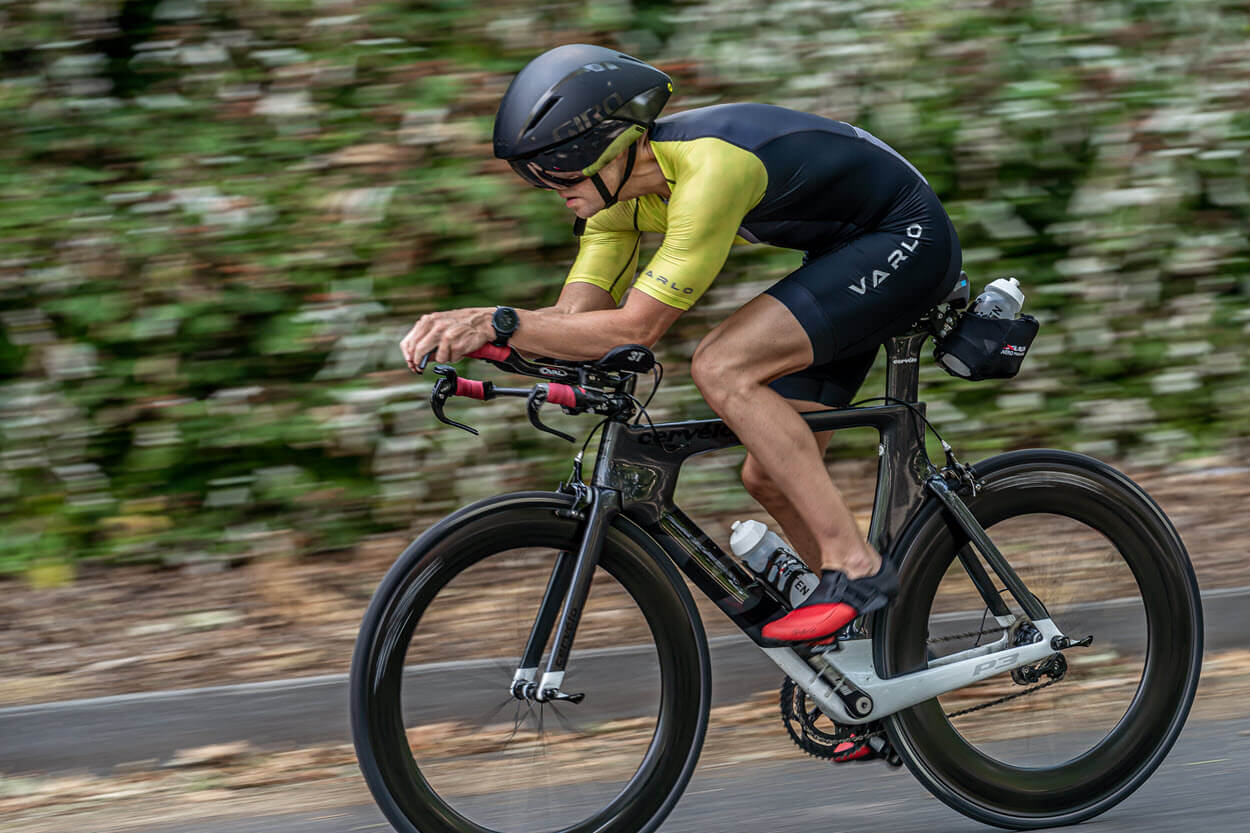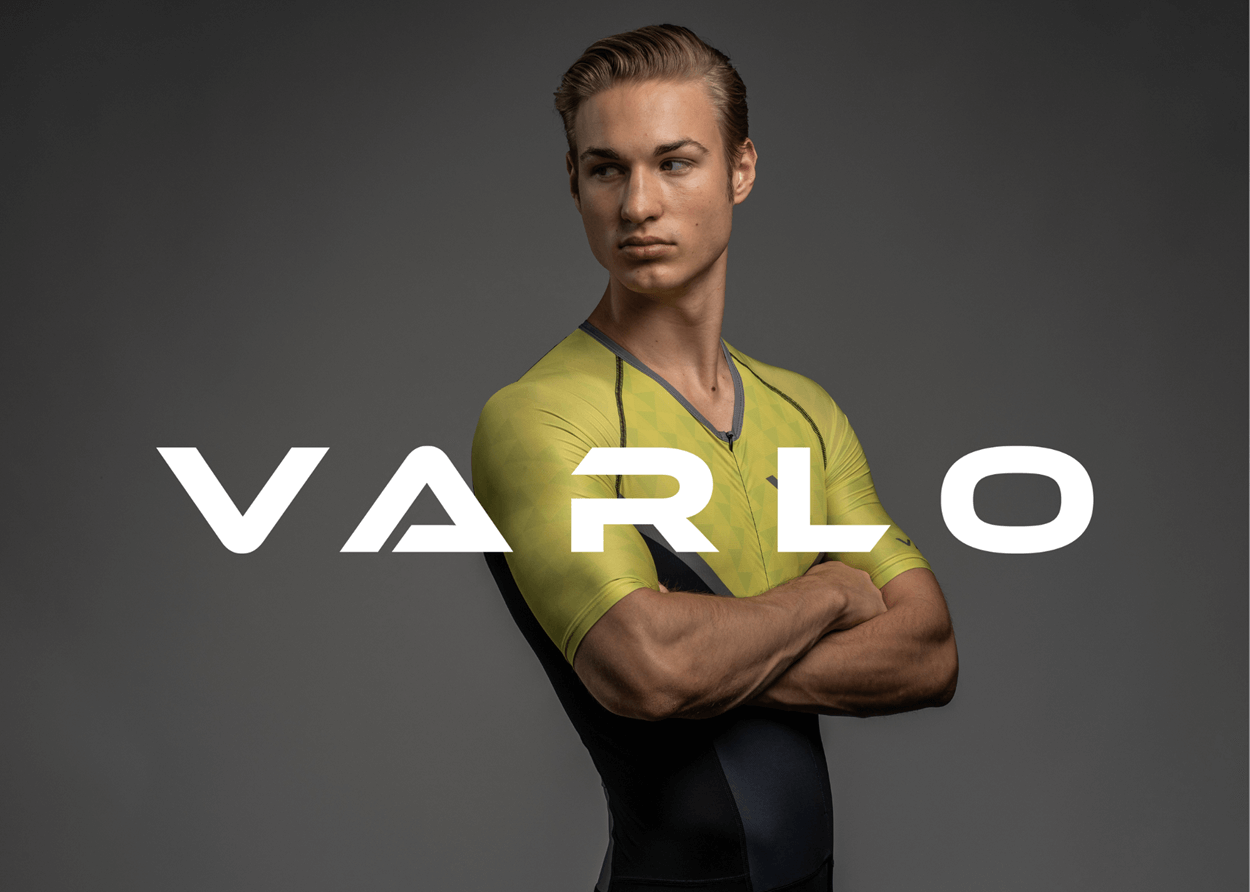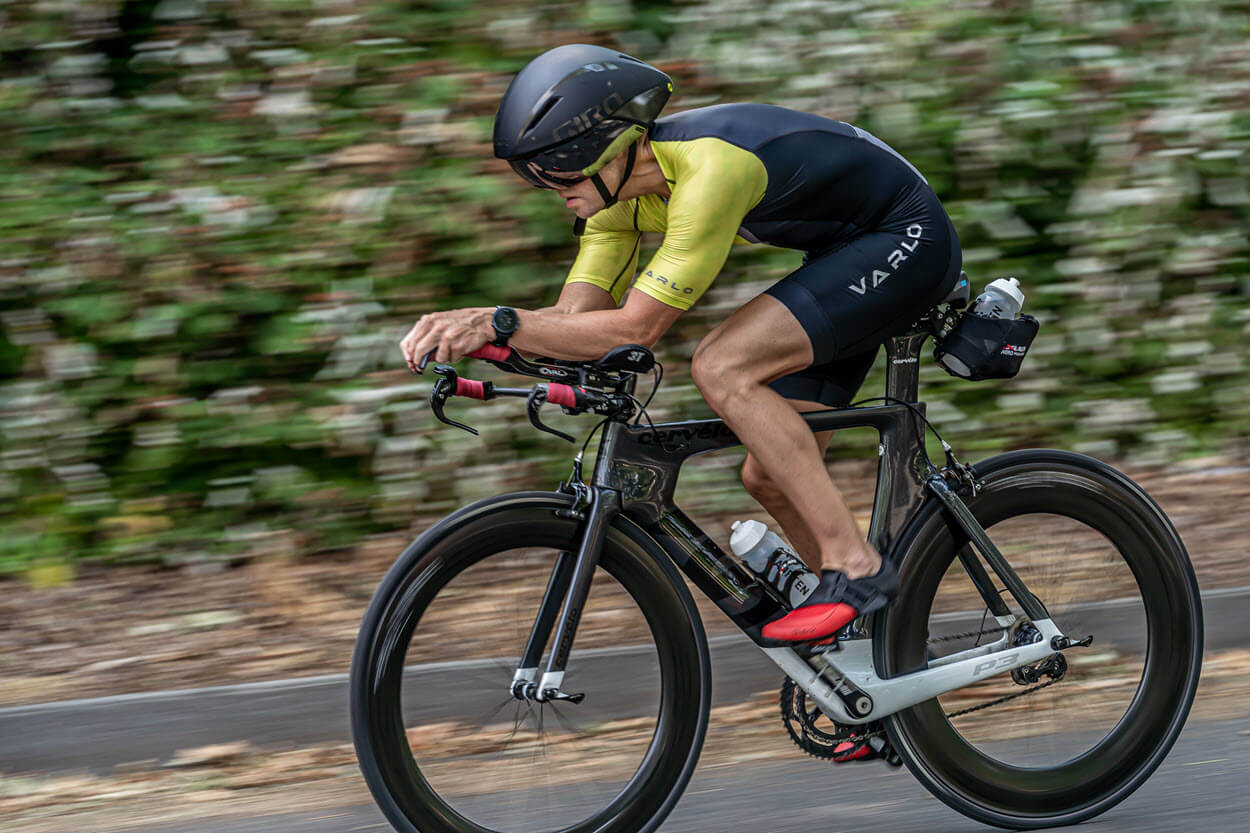
Founder and chief officer Soj Jibowu, talks to Jessica Owen about his new triathlon and cycling performance apparel brand Varlo.
The first recorded triathlon took place in San Diego, California, back in 1974. At the time, only 46 athletes completed the usual run, cycle and swim. However, the sport has since grown rapidly. In fact, since it became an official Olympic event in 2000, tens of thousands of people now participate in the sport every year, and competitions such as Ironman are known to people across the world.
But the truth is that triathlon participation has actually declined over the last few years since its period of massive growth in the 2000s. The main reasons being that it is too expensive and too difficult. But thankfully, one company has a vision to attract newcomers to the sport and turn the situation around: Varlo.
Founded in September 2020 and based in Philadelphia, US, Varlo is a new performance apparel brand that caters to the needs of triathletes and cyclists. It was founded by Soj Jibowu who has a plan to not only offer the sport a new clothing brand, but to increase participation numbers.
“Around six or seven years ago I was in Chicago and went to an International Triathlon Union (ITU) event as it just happened to be on,” says Jibowu.
“I was watching the athletes and just thought that they were amazing – the athleticism and endurance was incredible. I fell in love with the sport and started to participate myself. I then started to ask a lot of questions about the sport about participation numbers, the fluctuation of the triathlon market, where the market sits on a global scale and so on. I realised that the US market is very large, but I found that there was room for improvement with regard to participation and the marketability of the sport and so this made me think that I have to do this and see where it could go.”
These thoughts occurred two years ago, and now Varlo is here to start catering for the triathlon community, specifically the elite and the newcomers.
Jibowu says: “We want to offer top, elite apparel to dedicated athletes who care about shaving time off their swims or transitions who have been in the sport for a very long time. But we also want to target the 10% of athletes who are new to the sport.
“These people don’t want to spend around US$350 on a triathlon suit when there is already a race fee and a bike to think about. So, we want to provide a solution to those participants as well.”
The company launched purposefully towards the end of 2020 so that they could show off a handful of products to get their name and message out there, bearing in mind that the triathlon season is nearly over this year and races haven’t been going ahead anyway due to Covid-19. The plan is to be recognised now so that people begin to buy products at the start of 2021, ready for the upcoming season.
“At the moment we offer triathlon shorts, singlets, full sleeve suits as well as jerseys and bibs for men and women,” he says.
“In the spring, we’ll expand on that by offering a different tiered triathlon suit and additional cycling jerseys and race bibs.”
With triathlon being such a demanding sport, there are many different design aspects to consider. For example, garments need to perform well on land and in water; something that designers of other sportswear don’t often have to think about.
At Varlo, the company uses high-performance fabrics sourced from countries such as Switzerland, France, and Italy. Products have hydrophilic functions and some of the top tier garments have ceramic properties on the outside for UV protection, for example. Jibowu says that there have also been some studies to suggest that the dimple design on golf balls helps with the aerodynamics, so the company has applied some of these features to its products as well.
“Early on we said that we want to design garments that are comfortable, meaning that they can withstand being in water, then on a bike for anywhere between 10-100 miles, and then used for running," he explains. "So, we needed to make garments that are hydrophilic, like a second skin, and breathable.
“Most importantly, because the athlete is on a bike for a considerable amount of time, we needed some padding. So, we have an integrated fabric seaming approach and it almost feels like it’s not there. Hopefully with these characteristics, athletes can shave those added seconds off their performance.”
Although Jibowu is knowledgeable about the sport, his background is actually in medical science and chemistry. Therefore, he has had to learn a lot about textiles in a short space of time.
He says: “I remember going through online training sessions learning about different fabric weights and what stitches could be used with certain materials. I also went to Drexel University and literally just watched, listened, and learned. They were very kind to give me a tour and learn.
“Triathlon suits are very technical too, they’re not simple. So, I had to learn about panelling and body mapping. For example, you need good rotation in your shoulders for swimming and so you need a fabric that is light and not restrictive. It’s also beneficial to not have seaming on the shoulders as this can chafe. Also, for fabrics that are on the inner thighs, you need a higher weight and dyes that are resistant to fading. I could go on for a whole day about this because it’s all so interesting to me.”
This interest, and the fact that Varlo has such a solid team, is why the company is what it is, according to Jibowu. Currently, there are around 12 people working for the company and all are passionate about the sports and want to achieve.
“The message of Varlo is about togetherness, about building a better and faster tomorrow. We have coined the phrases ‘together we strive’ and ‘the future awaits’ because we believe the future belongs to not only the brave but those who are daring,” he says.
It's fair to say that the company needs this spirit and bravery at the moment, as the business has launched during a global pandemic. This doesn’t faze Jibowu though, as he says that the team is realistic about projections and doesn’t have any 2019 or 2018 sales predictions to worry about or try and meet. However, the main worry is about what will happen to the sport in 2021.
“One thing that is probably for sure is that the races might not be as robust as they were in 2019,” he says.
“In the past, there were 10,000 participant strong events where people fly in for one race, but I think the jury is still out for what’s going to happen. But we’re in a position where we’re building from the ground up and we have the flexibility as a new company as to what the future throws at us.”
He concludes by saying that ‘triathlon is an awesome sport, and the future is bright’. Although it may take some time for the sport to bounce back, it will bounce back, and in fact it may have needed this time to reset.
“In our position where we’re trying to attract new athletes, one of the barriers is that there are cost issues and Covid-19 is on our side as it may level the playing field for new participants to enter the sport. We're hopeful of that and hope to be a catalyst for bringing participants on board,” he says.
“Being a new company, it’s only going to go up for us and we’re excited about that.”
To find out more about Varlo, visit https://www.varlosports.com/
Have your say. Join the conversation and follow us on LinkedIn






